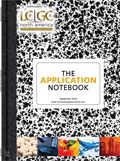Ex vivo Stabilization of Small Molecule Compounds and Peptides in EDTA Plasma for LC–MS-MS Analysis Using Frozen Aliquotting
The Application Notebook
The ex vivo lability of some drug compounds and molecules in bio-analytical assays can add complexity and uncertainty to results and can pose significant challenges in drug development efforts.
A novel methodology for stabilizing small molecule and peptide drugs was investigated by GSK and CryoXtract Instruments. The application of automated frozen aliquotting using the CXT 750 Frozen Sample Aliquotter to the analytical preparation was observed to improve the stability of labile compounds in both human and rat EDTA plasma.
The ex vivo lability of some drug compounds and molecules in bio-analytical assays can add complexity and uncertainty to results and can pose significant challenges in drug development efforts. This can be especially true for compounds that are subjected to long-term cryogenic storage and that may need to be tested multiple times (e.g. samples collected for clinical trials). Frozen aliquotting technology may offer a simple solution for stabilizing target compounds in frozen biological specimens, helping to streamline bio-analytical assay development and execution. The CXT 750 Frozen Sample Aliquotter, an automated instrument capable of generating quantitative aliquots of frozen plasma without thawing the sample, was evaluated at GlakoSmithKline for integration into biaonalytical workflows and the stabilization of labile compounds in EDTA plasma.
Experimental Conditions
A test mixture of labile small molecule compounds and peptides was spiked into human and rat plasma at a single concentration and frozen in 2 mL cryogenic vials. The samples were then subjected to four rounds of freeze-thaw aliquotting (liquid aliquotting of a thawed sample) and frozen aliquotting on CryoXtract's CXT 750 Frozen Sample Aliquotter. In both cases, aliquots of 100 µL volumes were generated per sample and time-point. Both freeze-thaw aliquots and frozen aliquots were precipitated and then analyzed by liquid chromatography tandem mass spectrometry (LC–MS-MS). Compound recovery for each aliquotting cycle was based on the peak area counts generated by the LC–MS-MS.

Figure 1: Peak area counts show a marked decline across time points zero through four in freeze-thaw aliquots. In comparison, frozen aliquots of human and rat plasma samples produced on the CXT 750 showed significant improvements in stability. Caffeic acid was not recoverable by LC-MS-MS after two to three freeze-thaw cycles, whereas 75% of compound remained recoverable after four frozen aliquotting rounds.
Results
In general, compounds that exhibited an extreme decrease in recovery when subjected to freeze-thaw aliquotting exhibited significantly better recovery when processed on the CXT 750. Figure 1 conveys the analytical recovery of caffeic acid, a small molecule drug compound, in human and rat EDTA plasma when subjected to multiple freeze-thaw cycles or frozen aliquotting. In both species, caffeic acid is nearly undetectable by LC–MS-MS after three freeze-thaw cycles. However, approximately 75% of the compound is detected when processed by frozen aliquotting on the CXT 750. Additional data for several more compounds tested can be found at
http://www.cryoxtract.com/images/pdfs/Cryoxtract_ISBER2015_small_molecule_GSK_Poster.pdf
Conclusions
The capability of the CXT 750 to generate frozen aliquots of a specified volume (precision data available in the full application note) and improve the stability of labile compounds for bioanalysis shows great promise for streamlining development and execution of analytical protocols in the regulated drug analysis arena.

CryoXtract Instruments, LLC
5 Constitution Way, Woburn, MA 01801
tel. (339) 298-5615
Website: www.cryoxtract.com

SEC-MALS of Antibody Therapeutics—A Robust Method for In-Depth Sample Characterization
June 1st 2022Monoclonal antibodies (mAbs) are effective therapeutics for cancers, auto-immune diseases, viral infections, and other diseases. Recent developments in antibody therapeutics aim to add more specific binding regions (bi- and multi-specificity) to increase their effectiveness and/or to downsize the molecule to the specific binding regions (for example, scFv or Fab fragment) to achieve better penetration of the tissue. As the molecule gets more complex, the possible high and low molecular weight (H/LMW) impurities become more complex, too. In order to accurately analyze the various species, more advanced detection than ultraviolet (UV) is required to characterize a mAb sample.














